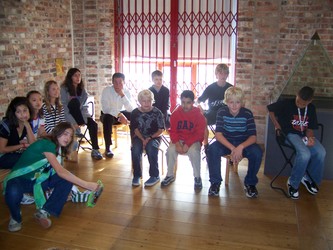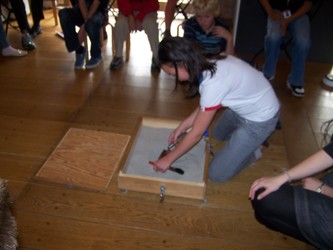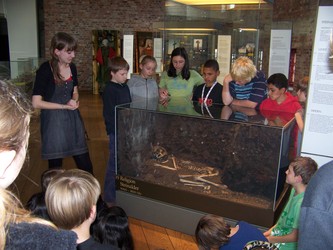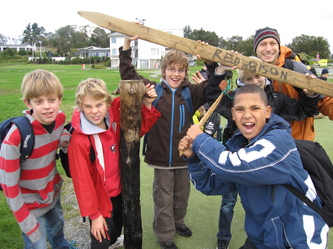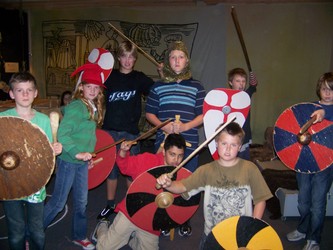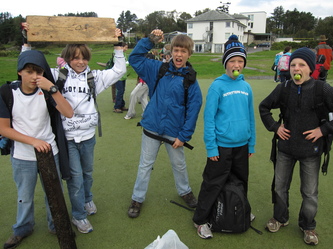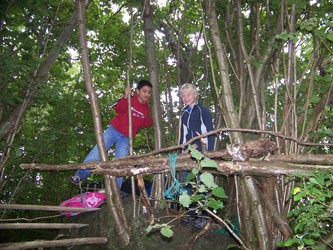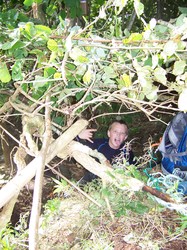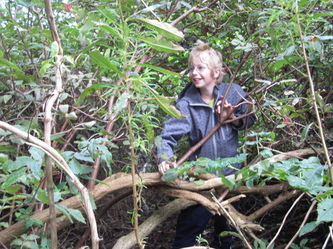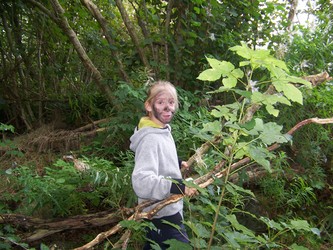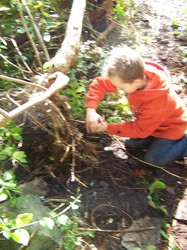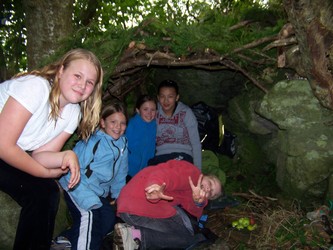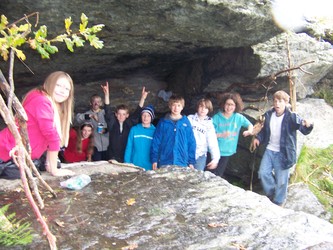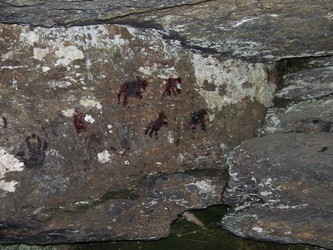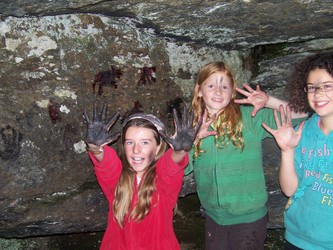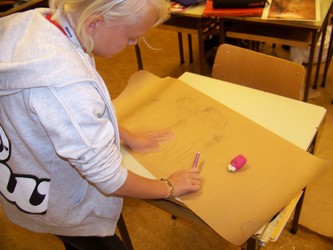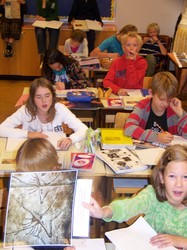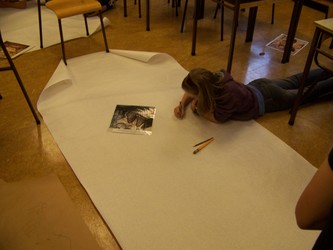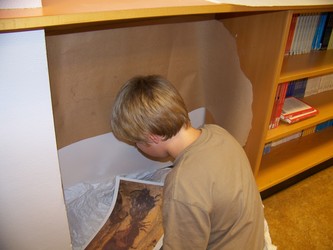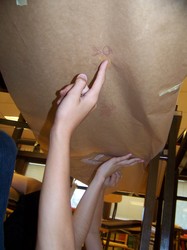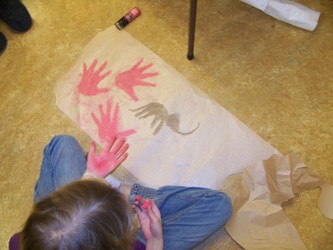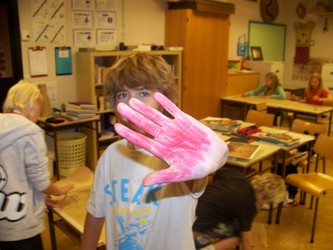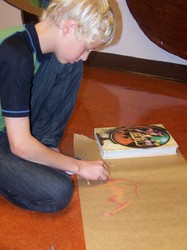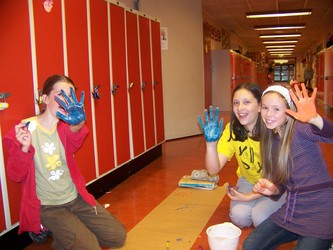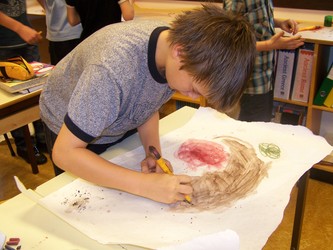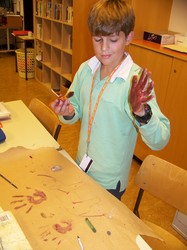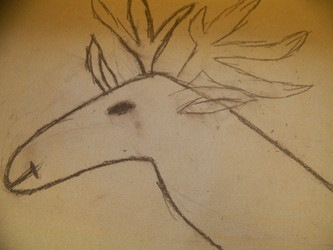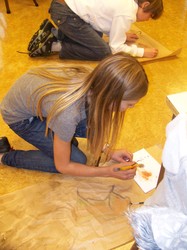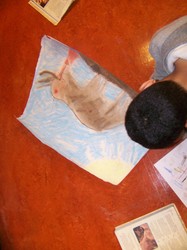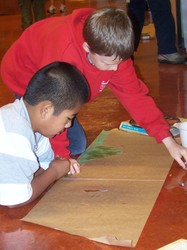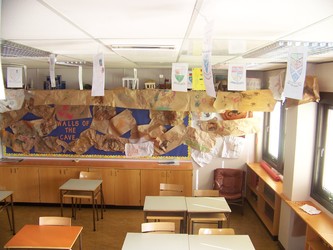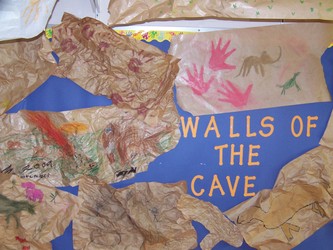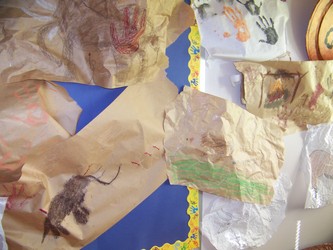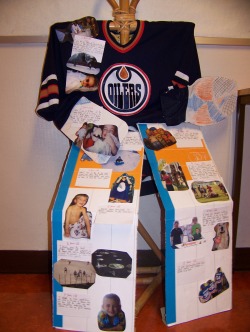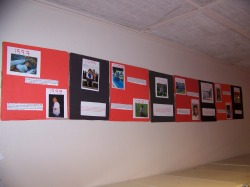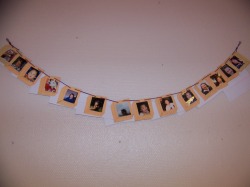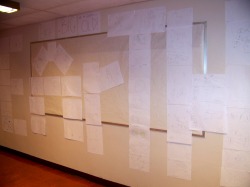ISS Grade 6: Mr. Catanzaro LA/SS
Big ideas: The Greek Agora
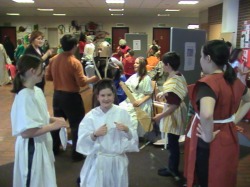
Students will perform as Ancient Greeks in an agora (open market) while presenting their research about this ancient civivlization. Students will have booths displaying their work and activities for visitors to try. Come see the Greek Agora from 9:00 to 11:15 on Friday, April 23, 2010.
Big Ideas, Week 16-17: Mesopotamian Research Papers
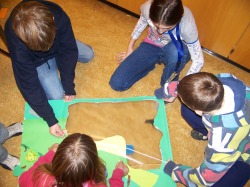
As we write our research essays, students will be required to use three sources of information. The students have used their textbooks and an historical database as in-class sources for their papers. Many students have also used books from our library.
Before break, students should explain their artifact idea to Mr. Cat before they leave for break. All clay cuneiform tablets should be turned in before break.
Before break, students should explain their artifact idea to Mr. Cat before they leave for break. All clay cuneiform tablets should be turned in before break.
Big Ideas, Week 15: Mesopotamia Unit Test, Topics and Clay Tablets
Big Ideas, Week 14: Mesopotamian Research Topics and Artifacts
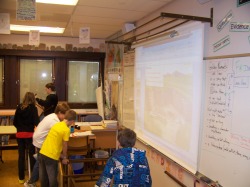
This week, we begin to review the basic concepts we have learned in our study of the land between two rivers. In preparation for next week's unit test, we will review the material through a variety of ways. From study guides with accompanying PowerPoint, to hands-on artifact creation, to research topic selection, to topics of review stations; the students will be immersed in the oldest river valley civilization.
Students will write a five paragraph research paper on one topic of their choosing on Ancient Mesopotamia. After brainstorming topics and viewing a list of possible topic selections, students will start to gather information on their topic, beginning with their textbook and a printed encyclopedia. Later, we will use credible digital sources to complete our research.
We plan to go through the research process together, using a minimum of three sources.
Students will write a five paragraph research paper on one topic of their choosing on Ancient Mesopotamia. After brainstorming topics and viewing a list of possible topic selections, students will start to gather information on their topic, beginning with their textbook and a printed encyclopedia. Later, we will use credible digital sources to complete our research.
We plan to go through the research process together, using a minimum of three sources.
Big Ideas, Week 13: Mesopotamian Leaders, the Lydians and the Phoenicians
Here are some links to help with the study of Ancient Mesopotamia:
King Hammurabi
The Code of Hammurabi (King Hammurabi is the first ruler in human history to write down laws for people to follow)
Sargon the Conqueror
Sennacherib the Destroyer
The Lydians (first coined money)
The Phoenicians (royal purple, best boats, colonization spreads ideas)
King Hammurabi
The Code of Hammurabi (King Hammurabi is the first ruler in human history to write down laws for people to follow)
Sargon the Conqueror
Sennacherib the Destroyer
The Lydians (first coined money)
The Phoenicians (royal purple, best boats, colonization spreads ideas)
Big Ideas, Week 12: Mesopotamia and Found Poems
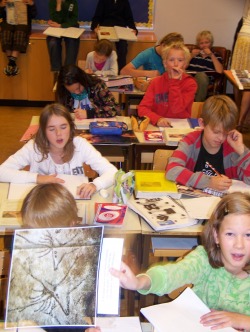
In social studies this week, we learned about life in the first civilization, Ancient Mesopotamia. Students should now have read sections one and two in their textbooks and are responsible for the material on pages 61-71. Students need to know the three leaders discussed in section two: Sargon the Conquerer, Hammurabi the Law Giver and Sennacherib the Destroyer.
Students will be finishing the text reading of this unit next week and as they prepare for their River Valley Civilization Projects, they will begin to write a four-five paragraph research essay on one topic from Ancient Mesopotamia.
We will discuss how to research, how to find accurate sources, how to use these sources to support our thesis statements and finally, how to cite the sources we use.
Students will be finishing the text reading of this unit next week and as they prepare for their River Valley Civilization Projects, they will begin to write a four-five paragraph research essay on one topic from Ancient Mesopotamia.
We will discuss how to research, how to find accurate sources, how to use these sources to support our thesis statements and finally, how to cite the sources we use.
Big Ideas, Week 11: Mesopotamia
This is a great web site with lots of actual artifacts from Ancient Mesopotamia.
Big Ideas, Week 10: Advantages and Disadvantages to Farming
This week in SS, students completed analyzing early farmers and wrote four paragraph essays. These essays helped them understand introductions, body paragraphs and conclusions. On Friday, students were introduced to the first civilization, Mesopotamia. There was a reading assignment about Mesopotamia for the weekend. This civilization will be our focus as we begin quarter 2 next week.
Big Ideas, Week 9: Early Farmers and Skara Brae
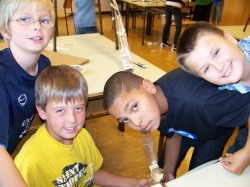
We have continued to review early farmers. Students read independently in their textbooks about early farmers and also used Venn diagrams to compare hunter/gathers and farmers. As they presented the similarities and differences of these two lifestyles, many new things were analyzed and discussed. Controlling nature vs. relying upon nature continues to be a conflict for humans today. Students are also reading about a famous 5,000 year-old European farming village, Skara Brae.
Big Ideas, Week 8: Early Farmers
We will discuss the important changes made by some early people as we switch our focus from nomadic hunter gatherers to settled farmers. We will look at parallel timelines to see where and when farming started for our species. Once we understand how farming began, we will begin to talk about how people created civilizations.
Big Ideas, Week 7: Leirskole: Outdoor Education
Throughout the week, we were reminded of the history of Norway. Students worked collaboratively and were able to relate many chores and the fishing nets to the studies we had of early people. Division of labor helped students survive their chores.
Big Ideas, Week 6: Hunter Gather Early People Unit Test
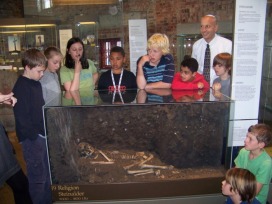
Last week we walked in history. See the photos below of the clans working together at Svarthola to build shelters. But nothing can compete with the original resident of Svarthola, seen here with us over 7,500 years after he lived in Viste. We met the boy from the cave on our trip to the museum Friday. These trips will be study guides as we prepare for the Early People summative assessment. Students have been reviewing and studying the big ideas.
Big Ideas, Week 5: Division of Labor and Teamwork
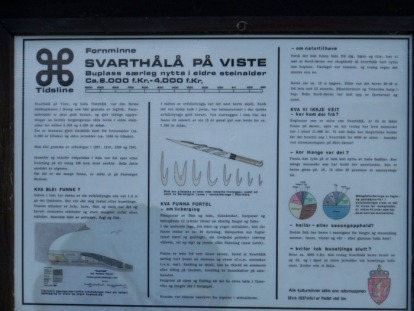
This week: Cooperative learning out in nature to understand how clans work around a stone age cave. Followed by: Museum trip to understand early people and see who was excavated from the cave we just visited.
Check out this video as we review the earth's age and size:
Size of earth
Big Ideas, Week 4: Cave Paintings and Hunter-Gatherer Reading
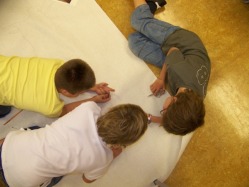
In week 4 of social studies, students read and analyzed a story entitled: "Boy of the Painted Cave". They used their reading strategies to code the story as they read. They listed all of the equipment that the boy in the story, Tao, had to collect in order to make the paintings.
We also discussed how these hunters respected the animals they killed and used all parts of the animal for survival. The students understand these paintings were a sign of respect for the animals, in essence a hunter gatherer's life source. As you can see, the realistic ways each student created cave paintings helped bring history alive. In addition to this activity, we read more about early people. We will continue this discussion with our visit to Svarthola next Wednesday. Students will work as a "clan" to make shelters, search for food and divide the labor within their group. This field trip will help students get a one day warm-up for their cooperative, hands-on learning that will be coming up at Leirskole.
We also discussed how these hunters respected the animals they killed and used all parts of the animal for survival. The students understand these paintings were a sign of respect for the animals, in essence a hunter gatherer's life source. As you can see, the realistic ways each student created cave paintings helped bring history alive. In addition to this activity, we read more about early people. We will continue this discussion with our visit to Svarthola next Wednesday. Students will work as a "clan" to make shelters, search for food and divide the labor within their group. This field trip will help students get a one day warm-up for their cooperative, hands-on learning that will be coming up at Leirskole.
Big Ideas, Week 3: Timelines Displayed and Hunter-Gatherer Reading
In week 3 of social studies, students presented their personal timelines. As you can see, the creative ways each student presented his or her own life was amazing! In addition to this display, we began reading about early people. We will discuss these ancient people as we learn how they hunted and gathered while migrating around the earth. We will use our reading strategies from language arts to help us make meaning from the text about these early people.
Big Ideas, Week 2: Personal Timelines
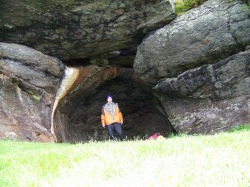
In week 2 of social studies, students put together their own personal timelines. The students had to choose one event to highlight from each year they have been alive. Additionally, each student was asked to bring in a personal artifact from their life. With each presentation, the students placed themselves on the timeline of human history.
We also received SS textbooks and began to discuss early people's development as hunter-gatherers.
We also received SS textbooks and began to discuss early people's development as hunter-gatherers.
Big Ideas, Week 1: Welcome to Social Studies!

In week 1, we learned that the earth is a big place which most people had a hard time drawing from memory. Too bad we can't all be like Stephen Wiltshire. Check out the "Living Camera" video by clicking on the photo of the earth.
We also learned that the earth has been around for BILLIONS of years while humans have only been around for thousands. We asked the big question: Have humans had a positive or negative effect on the world? The answers cited examples of the beauty people have created and the horrors humans have also caused. We will revisit this "anchor" question throughout the year and add to our analyzing with each discussion.
We also learned that the earth has been around for BILLIONS of years while humans have only been around for thousands. We asked the big question: Have humans had a positive or negative effect on the world? The answers cited examples of the beauty people have created and the horrors humans have also caused. We will revisit this "anchor" question throughout the year and add to our analyzing with each discussion.
Throughout our year long focus on ancient peoples and civilizations, we will also often discuss where we are headed in the future. Some questions will inevitably be raised about climate change.
One organization that is trying to promote awareness about damaging levels of Carbon Dioxide in the atmosphere is 350.org
It gives students ideas about how they can get involved and help make the world a better place for themselves and future generations.
One organization that is trying to promote awareness about damaging levels of Carbon Dioxide in the atmosphere is 350.org
It gives students ideas about how they can get involved and help make the world a better place for themselves and future generations.
